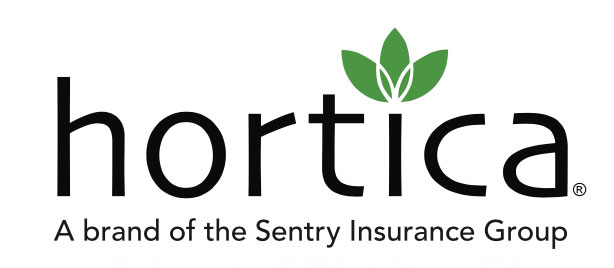Cybersecurity: A Guide for Greenhouse Growers
A new year often means new priorities. As you assess your plans for 2023, make sure protecting your business from cyberattacks is one of them.
It can be easy to think of cybercrime as something that happens to other people in other businesses, but it’s not limited to specific industries like the financial sector. That’s especially true as more businesses increase their reliance on technology, with more of their operations and equipment connected to the internet. In the horticultural industry, we’re seeing several examples of greenhouses adopting new technology to improve standards — from growing and harvesting efficiencies to customer communications.
More connected operations and online services may introduce added risk though. In fact, as recently as this past year, the FBI shared a warning to agricultural business owners about the increase in cyberattacks.
So, what can you do to protect your business? Let’s take a closer look.
Types of Cyber Risks
Before you can take steps to protect your business, it’s helpful to understand the types of cyber risks that exist, and how hackers can gain access to sensitive information.
- Ransomware: Ransomware is malicious software that restricts access to files — usually by encryption. Cyber criminals can threaten to delete, share publicly, or leave the data encrypted if the victim doesn’t pay the ransom. Because any device that connects to the internet can be affected by ransomware, this type of breach has quickly become one of the largest threats to growers.
- Phishing: Phishing occurs when cyber criminals send fraudulent emails or messages — usually disguised as legitimate communications — to take personal information, money, or gain access to a device. Oftentimes, the messages are written to make the reader feel a sense of urgency to click a link or send information. Phishing compromises your business’s data security and can lead to more costly ransomware attacks down the road.
- Fraudulent impersonation: Fraudulent impersonation occurs when a cyber attacker impersonates someone — such as an authority figure or a vendor — to gain data or money from your business. The scam may begin as a phone call, email, text or other form of communication. Many attacks occur when well-meaning employees receive an invoice from a fraudulent vendor and transfer money to the criminal’s bank account.
Any of the risks above could disrupt your operations and expose sensitive data. The good news is that you can take several cost-effective steps to reduce the risk, and impact, of a potential cyberattack. Here’s how to get started.
Reduce the Risk of Human Error
When you think of the causes behind a data breach, you may think of hackers or outdated technology. And although those factors could pose a threat to your business, human error often plays a significant role. More often than not, cyber infections can be traced back to someone clicking something they shouldn’t.
Train your employees on cybersecurity as soon as they’re hired, and at least annually thereafter. Your team is often the first line of defense against cyber threats because they interact with your greenhouse’s systems and technology.
Help your employees learn to recognize suspicious activity and teach them how to manage the company’s IT equipment. A clear set of guidelines should be available for everyone to follow if someone suspects a security threat. When equipped with the proper skills and knowledge, your employees can identify potential risks and take precautions before a threat becomes a breach.
Evaluate and Strengthen Your Technology
To my earlier point, the technology you use may open your greenhouse up to additional vulnerabilities. When I talk with growers, I often encourage them to have a local security expert check their hardware and software systems for strong encryption and authorization protocols.
If you plan to cycle out old technology, transfer and erase any sensitive data from the system beforehand. This can help ensure your critical data doesn’t fall into the wrong hands. It’s also important to close laptops and other devices when they’re not in use around your facility to prevent unauthorized access. For existing technology, remember to update your software and operating systems on a regular basis. These updates can include patches and security fixes that keep you one step ahead of potential cyber risks.
And while we’ve all heard similar advice before, don’t overlook the value of strong passwords. Encourage your employees to create long, unique passwords using a variety of characters, numbers, and symbols. To help, consider requiring regular password resets on any company devices you provide. Sometimes the simplest steps can provide the strongest protection.
Back up Your Critical Data
While prevention is the ultimate priority, we’ve seen cyberattacks evolve over the years. Because of this, backing up your data is among the most effective ways of making sure you can recover and restore information following an incident. Save local copies of any data that is essential to running your business.
Consider Cyber Insurance
Even when you take every precaution, mistakes happen, and when they do, the results could be costly. Cyber insurance can help financially protect your business from losses caused by a cyberattack. It helps protect your business for liability to others and can reimburse you for expenses related to a data breach — which could include:
- Computer specialists
- Legal advice
- Public relations expenses
- Notification costs
- Credit monitoring services
It’s also worth noting that your insurer may offer additional online resources you can use to train your employees if you have cyber liability insurance. That way you can get the full value out of your coverage and build awareness across your team to help reduce the risk of losses.
Help Is Available
Don’t wait. One data breach at your business could lead to stolen data, large costs, and lasting damage to your reputation.
If you have cyber liability insurance, your insurance provider can help cover losses if confidential data is compromised at your company. They can also provide information and resources to help you prevent losses before they happen.
Hopefully the steps I’ve shared in this article help you do a thorough cross-check against your plans for 2023, but they shouldn’t replace the conversations you should be having you with your insurance carrier or agent. Your insurer can help provide more targeted advice and help you navigate any updates to your policy. Please email me if you have any questions. I’m happy to help. And happy new year!









